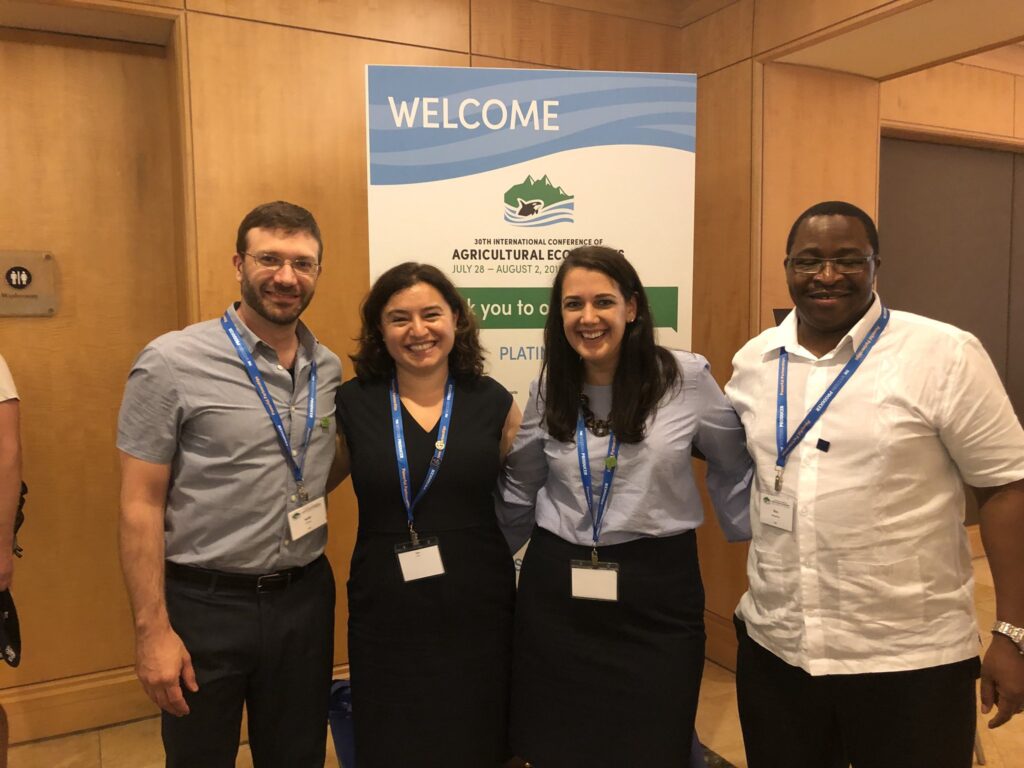HarvestPlus’ innovative solution for micronutrient malnutrition is being showcased by colleagues and collaborators at the triennial International Conference of Agricultural Economists in Vancouver. The flagship event of the International Association of Agricultural Economists, ICAE is known for fostering the application of agricultural economics to improve rural economic and social conditions.
Presentations highlighted the keen efforts of HarvestPlus and partners to ensure biofortification is implemented strategically and evaluated continuously. For resource-poor families or rural communities who rely on staple crops such as cassava or maize for much of their diet, nutrient-enriched versions of these crops present a cost-effective, sustainable strategy to improve nutrition by eating the foods they readily have available and are accustomed to. Biofortification, which uses conventional crop breeding to increase micronutrient levels, helps address preventable deficiencies of key vitamins and minerals like iron, vitamin A and zinc. This hidden hunger often results from diets lacking in diversity or essential nutrients.
We congratulate HarvestPlus Research Analyst Caitlin Herrington, who received an honorable mention for the Nils Westermarck Prize for the best poster presentation by a young professional. Her paper (“Subnational prioritization for biofortification interventions in Nigeria”) develops an index to pinpoint the states and broader zones of the country in which vitamin A cassava, vitamin A sweet potato, vitamin A maize and iron pearl millet would most effectively be introduced. The work draws from HarvestPlus’ global Biofortification Prioritization Index, which ranks Nigeria as a high-priority country for biofortification investment due in part to its severe levels of vitamin A deficiency and anemia (a proxy for iron deficiency). To date HarvestPlus has reached 604,000 households with vitamin A cassava and 222,000 with vitamin A maize.
“We develop subnational indices for large, diverse countries, like Nigeria, using production, consumption, and micronutrient deficiency data,” Herrington says. “This tool ensures HarvestPlus and our partners prioritize crop breeding and delivery in states where the impact will be greatest.”
Colleagues Keith Lividini (Head of Strategy and Policy Research), Bho Mudyahoto (Head of Monitoring and Evaluation) and Ekin Birol (Director of Impact and Strategy) presented lessons learned from 15 years of biofortification at a session called “Challenges and opportunities for scaling-up agricultural innovations.” Contributing researchers from partner universities and research centers also spoke, including the International Institute of Tropical Agriculture (IITA)’s Tahirou Abdoulaye, the International Maize and Wheat Improvement Center (CIMMYT)’s Hugo de Groote and the International Food Policy Research Institute (IFPRI)’s Alan de Brauw.
The growing body of evidence and commitment to its careful implementation discussed at ICAE shows HarvestPlus’ leadership in biofortification evidence and technology. This curiosity and tenacity is yielding healthier futures for families and communities.
